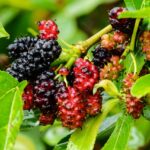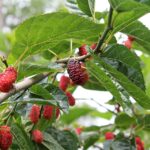When Do Mulberry Trees Bloom? A Complete Guide
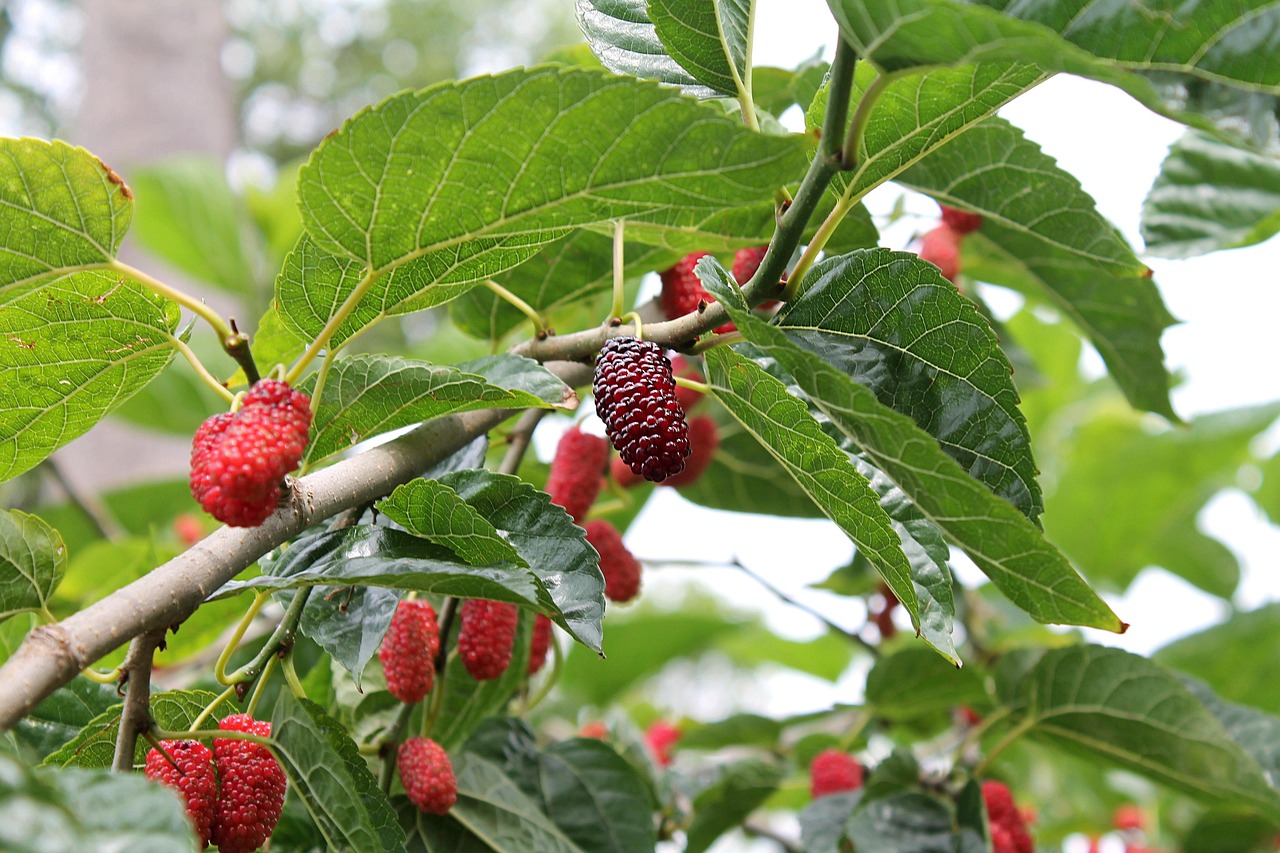
When we talk about a mulberry tree “blooming,” it’s not quite like the showy flowers you might see on an apple or cherry tree. Mulberry flowers are actually small and tend to hang down in clusters. They’re usually a greenish-yellow color. The main event with mulberry trees, for most people, is the fruit they produce later on. The flowers are the first step in getting those delicious berries, though. They appear in the spring, and their presence signals that the tree is getting ready to do its thing for the year.
Understanding Blooming Mulberry Tree: What “Blooming” Means
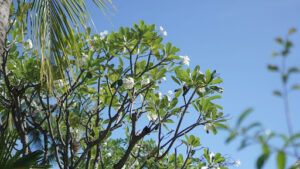
It’s important to know that not all mulberry trees are the same when it comes to flowers and fruit. Some trees have separate male and female flowers, meaning you need both a male and a female tree for fruit. Other trees have both types of flowers on the same plant. Then there are the trees that can even change their sex over time, which is pretty wild.
The actual blooming period for mulberry trees is relatively short, often lasting only a week or two. This brief window is when pollination happens, setting the stage for fruit development.
Here’s a quick look at what happens during the blooming phase:
- Flower Appearance: Small, often inconspicuous, greenish-yellow catkins or spikes. They grow in clusters along the branches.
- Pollination: Mulberry trees are primarily pollinated by wind. The pollen is released into the air and carried to other trees.
- Scent: While not overpowering, the flowers can give off a subtle, earthy, and sometimes slightly sweet aroma.
- Duration: The flowering stage itself is quite brief, typically lasting only about one to two weeks in the spring.
The Blooming Season of the Mulberry Trees
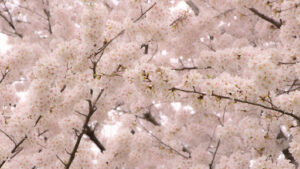
When do mulberry trees bloom? This is a question I get asked a lot, and it really depends on a few things, but generally, you can expect to see the mulberry tree bloom in the spring. Think of April and May as the prime time for this to occur. The flowers themselves are pretty small and hang down in clusters, often in a greenish-yellow color. They don’t exactly put on a show like some other flowering trees, but they are the start of something delicious if you’re growing them for fruit.
It’s interesting to note that the actual flowering period for a mulberry tree is usually quite short, often lasting only a week or two. After the flowers are pollinated, it takes several more weeks for the fruit to start developing and eventually ripen. So, while the blooming itself is brief, it’s a critical step in the tree’s annual cycle. I’ve found that understanding this timing helps manage expectations, especially if you’re waiting for those sweet berries.
The transition from dormancy to active growth in spring is when the tree channels its energy into producing flowers, which are essential for the subsequent fruit development. This annual event is a reliable indicator of the tree’s health and readiness for the growing season.
Several factors can influence precisely when your mulberry tree starts to bloom. Things like your specific location, the local climate, and even the particular species of mulberry you have can shift the timeline. For instance, a warmer spring might encourage earlier blooming, while a late frost can sometimes damage the developing flower buds, delaying or reducing the bloom. It’s always a good idea to check resources specific to your region or consider pruning an Eastern Redbud to understand seasonal tree care better.
Here’s a general idea of when different types might start:
- White Mulberry (Morus alba): Often among the earliest bloomers.
- Red Mulberry (Morus rubra): Typically blooms around the same time as White Mulberries.
- Black Mulberry (Morus nigra): May bloom slightly later in the spring season.
Flowering Stages in a Blooming Mulberry Tree
When you look at a blooming mulberry tree, it’s not just a single event. It’s more like a process that unfolds over time. I’ve noticed that the flowers themselves are small and often greenish-yellow, not the big, showy kind you might see on other trees. They tend to hang down in clusters, almost like little catkins, and they appear in the spring, usually around April and May.
The actual flowering period for a mulberry tree typically lasts for about one to two weeks. During this time, the tree is busy getting ready for fruit production. It’s interesting because some mulberry trees can even produce fruit without being pollinated, which is a neat trick of nature.
Here’s a general breakdown of what I observe:
- Bud Break: This is the very first sign, where the tree starts to wake up from winter. You’ll see tiny buds swelling on the branches.
- Flower Emergence: The small, greenish-yellow flowers begin to appear, often in clusters along the new growth or on older wood.
- Pollination: The flowers are wind-pollinated. If you’re near a tree during this time, you might notice a fine dust falling, which is the pollen.
- Post-Flowering: After the flowers have done their job, they’ll drop off, and the tiny fruits will start to form. This transition is pretty quick.
It’s important to remember that while the flowers themselves are brief, the entire process from bud break to the start of fruit development is what makes up the ‘flowering stage’ for a blooming mulberry tree. It’s a subtle but vital part of the tree’s annual cycle.
For those interested in fruit production, understanding these stages helps. For instance, knowing when pollination occurs can give you an idea of when to expect the berries to start growing. It’s a bit like watching a plant’s calendar unfold. If you’re looking to plant a mulberry, knowing about hackberry trees and their blooming times might also be helpful for comparison.
Factors Affecting Bloom Time in Mulberry Trees
When a mulberry tree decides to show off its flowers, it’s not just a random event. Several things play a role in when that happens. I’ve noticed that the weather is a big one. If a spring is particularly warm, things tend to get going a bit earlier. Conversely, a late frost can really set things back, sometimes even damaging the flower buds before they have a chance to open. It’s a delicate balance.
Soil conditions matter too. While mulberries are adaptable, they do best in soil that drains well and has a decent amount of nutrients. If the soil is too compacted or lacks what the tree needs, it might not have the energy to produce a good bloom. I’ve found that a yearly feeding, usually in late winter with a balanced fertilizer, can really help the tree get ready for the growing season. It’s like giving it a good breakfast before a big day.
Here’s a quick look at what influences the timing:
- Temperature: Warmer springs generally mean earlier blooms, while cold snaps can delay or damage them.
- Sunlight: More sun usually encourages better flowering and fruit production, though they can tolerate some shade.
- Water Availability: Consistent moisture, especially during the establishment phase, is important. Drought can stress the tree and affect blooming.
- Tree Age and Health: Younger trees might not bloom as profusely as mature ones, and a stressed or unhealthy tree will likely have fewer flowers.
It’s also worth remembering that different types of mulberry trees have their own natural schedules. Some varieties might naturally bloom a little earlier or later than others. So, if you’re looking at a specific tree, knowing its species can give you a clue about its typical blooming period. For instance, understanding the needs of your specific tree can help you anticipate its flowering. I’ve learned that paying attention to these details makes a difference in how well the tree performs year after year. It’s not just about waiting for spring; it’s about understanding the tree’s signals and its environment. If you’re thinking about pruning, doing it at the right time, like late winter, is also key to not interfering with the upcoming blooms.Pruning crabapple trees is similar in that timing is everything for good results.
Sometimes, a tree might skip blooming altogether if it’s gone through a particularly harsh winter or experienced significant stress. It’s the tree’s way of conserving energy. Don’t be discouraged if it happens; focus on providing good care, and it will likely bounce back next season.
Different Mulberry Species and Their Blooming Schedules
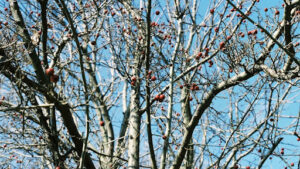
When I first started looking into mulberry trees, I was surprised by how many different kinds there are. It turns out, not all mulberries are the same, and this affects when they bloom and when you can expect fruit. Knowing the species can help you figure out what to expect from your tree.
There are three main types that most people talk about: White Mulberry (Morus alba), Red Mulberry (Morus rubra), and Black Mulberry (Morus nigra). Each has its own characteristics, including when they produce their flowers.
- White Mulberry (Morus alba): These trees are known for being pretty adaptable and growing quite fast. They tend to flower in the spring, usually around April and May. The flowers themselves are small and hang down, and they’re pollinated by the wind. This species is often the earliest to show its blooms.
- Red Mulberry (Morus rubra): Similar to the White Mulberry, the Red Mulberry also flowers in the spring. Its blooming period generally overlaps with the White Mulberry, typically occurring in April and May. The fruit that follows is a nice mix of sweet and tart.
- Black Mulberry (Morus nigra): This one is a bit different. While it also flowers in the spring, its blooming schedule can sometimes be a little later than the other two, depending on the specific climate. Black Mulberries are famous for their deep, rich flavor and can live for a very long time, often over 100 years. It’s worth noting that while they flower in spring, their fruit ripens a bit later, often into July.
It’s interesting how these trees, despite being in the same genus, have these subtle differences in their timing. This variation is a good reminder that even within the same type of tree, local conditions can play a big role in when you see those first flowers appear. If you’re thinking about planting a mulberry, understanding these species differences can help you pick the right one for your needs and get a better idea of its yearly cycle. Learning about how to propagate these trees can also be a rewarding part of the process of propagating mulberry trees.
The timing of when a mulberry tree blooms is tied to its species, but also heavily influenced by its environment. Factors like temperature and sunlight play a significant role in signaling the tree to start producing flowers each spring. Even within a single species, you might see slight variations from year to year based on the weather patterns.
Signs That a Mulberry Tree Is About to Bloom
I’ve noticed that before my mulberry tree really gets going with its flowers, there are a few subtle changes I can look out for. It’s kind of like the tree is clearing its throat before it starts singing.
First off, keep an eye on the buds. They start to swell up, looking plumper than usual. They’re usually a bit dark and pointed, and you can see them getting ready to open. It’s not a dramatic change, but if you’re paying attention, you’ll see it.
Then there’s the color. The new growth on the branches starts to look a bit brighter, a more vibrant green. It’s like the tree is waking up and getting dressed for spring. The leaves themselves haven’t fully unfurled yet, but you can see the potential there.
- Swollen buds: Look for buds that are noticeably larger and more prominent on the branches.
- New green growth: The tips of branches will show fresh, bright green shoots.
- Slight warming: While not a visual cue, a general increase in temperature usually precedes the blooming period.
It’s easy to miss these early signs if you’re not actively looking. The tree doesn’t put on a big show until the flowers actually appear, so these subtle hints are for the dedicated observer.
Sometimes, you might even catch a faint scent. It’s not strong, but it’s a sort of earthy, spicy smell that starts to drift from the tree. It’s not overpowering, but it’s definitely there if you get close enough on a calm day. It’s a good indicator that things are about to get interesting.
How Climate & Location Influence a Blooming Mulberry Tree
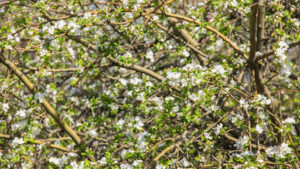
When I think about getting my mulberry tree to produce those delicious fruits, I realize how much the weather and where I plant it really matter. It’s not just about sticking it in the ground and hoping for the best.
The right climate is probably the biggest factor. Mulberry trees, especially varieties like the White Mulberry, are pretty tough and can handle some serious cold, even down to -36°C. That said, they really hit their stride and produce the most fruit when the temperatures are between 20°C and 30°C during the growing season. If you live somewhere with really harsh winters or scorching summers, it can affect when and how well they bloom.
Location plays a role, too. These trees generally like a good amount of sun, at least four hours a day, but they can manage in partial shade. More sun usually means more fruit, though. They aren’t super picky about soil, but they do prefer it to drain well. I’ve noticed mine does best when the soil isn’t too wet or too dry. They can even handle different soil types, from clay to sand, as long as water can drain away.
Here’s a quick rundown of what they generally prefer:
- Sunlight: Full sun is ideal, but they can tolerate partial shade.
- Soil: Well-drained, loamy soil is best, with a pH between 5.0 and 7.0.
- Water: They’re pretty drought-tolerant once established, but consistent moisture helps with fruiting.
- Temperature: They thrive in temperate climates but can adapt to subtropical and even some tropical zones.
It’s interesting how adaptable they are. I’ve seen them growing in all sorts of places, from roadsides to forests. But for the best blooms and fruit, giving them a spot that mimics their preferred conditions makes a big difference. It’s like they’re telling you what they need.
If you’re in a colder region, you might want to look into specific cultivars known for their cold hardiness, like those suited forUSDA zone 4. Understanding your local climate and choosing a mulberry variety that fits will set you up for success. It’s all about matching the tree to its environment.
Care Tips to Encourage Blooming in Mulberry Trees
While mulberry trees are generally quite self-sufficient, a few thoughtful practices can help encourage more robust blooming and, consequently, better fruit production. It’s not about forcing them, but rather about providing the conditions they naturally prefer.
First off, sunlight is a big deal for these trees. Aim to ensure your mulberry tree receives at least six to eight hours of direct sunlight each day. If your tree is in a spot that’s become too shaded over time due to other plants growing, consider some strategic pruning of those surrounding plants. Proper light exposure is key for the tree to photosynthesize effectively and channel energy into flowering.
Watering is another important aspect. While established trees are fairly drought-tolerant, consistent moisture, especially during the spring and early summer when flowers are developing, makes a difference. For young trees, watering a couple of times a week with a good soak is usually sufficient. For mature trees, you might only need to water during extended dry spells. Overwatering can be just as detrimental as underwatering, so good drainage is also a must. If you’re unsure about your tree’s water needs, checking the soil moisture a few inches down is a good habit.
Pruning plays a role, too, though it’s a bit of a balancing act. If your goal is more blooms, you’ll want to prune in late winter or early spring before new growth really kicks off. The idea is to remove any dead, damaged, or crossing branches. Some growers also suggest a more aggressive pruning approach to create a strong scaffold of branches that you can then manage annually. This can help direct the tree’s energy. Remember that mulberry flowers and fruit buds typically form on second-year wood, so be mindful of what you’re cutting.
Here’s a quick look at what to focus on:
- Sunlight: Maximize direct sun exposure.
- Water: Provide consistent moisture, especially during the growing season, but avoid waterlogged soil.
- Pruning: Remove dead or weak branches and consider annual pruning to shape the tree.
- Soil: Ensure good drainage. While mulberries aren’t overly fussy about soil type, they do best in soil that isn’t constantly saturated.
Sometimes, a lack of nutrients can hinder blooming. A yearly application of a balanced fertilizer, like a 10-10-10 mix, applied in late winter, can be beneficial. A general guideline is about one pound of fertilizer for every inch of the tree’s trunk diameter. This can give the tree the boost it needs to produce a good show of flowers.
Finally, don’t forget about the soil around your tree. Applying a layer of mulch in the spring can help retain soil moisture and suppress weeds, which compete for resources. Just be sure to keep the mulch a few inches away from the trunk itself. By paying attention to these care tips, you can help your mulberry tree put its best bloom forward, leading to a more bountiful harvest. For more on general mulberry care, you might find information on mulberry tree care helpful.
Want your mulberry tree to produce lots of fruit? Giving it the right care is key! Make sure it gets enough sun and water, and trim it at the right times. For more detailed advice on keeping your mulberry tree healthy and fruitful, check out our expert tips. Visit our website today to learn more!
Frequently Asked Questions
When can I expect my mulberry tree to start blooming?
Generally, mulberry trees begin to show their flowers in the springtime, usually around April and May. This is when they prepare for the growing season and start producing new leaves and blossoms.
How long do the flowers on a mulberry tree last?
The lovely little flowers on a mulberry tree typically stick around for about one to two months. After this period, the tree shifts its energy to making fruit, which usually starts appearing in the summer.
What do mulberry tree flowers look and smell like?
Mulberry flowers are quite small and usually a shade of yellow-green. They tend to grow in clusters. The tree’s leaves give off a pleasant smell that’s a bit earthy, spicy, and subtly sweet.
What factors might affect when my mulberry tree blooms?
Several things can influence when your mulberry tree decides to bloom. The most common reasons for a delay or failure in blooming and fruit production are a lack of nutrients in the soil or a late spring frost that can damage the flower buds.
Are there specific types of mulberry trees that bloom at different times?
While most mulberry trees follow a similar spring blooming pattern, the exact timing can vary slightly between different types. However, the general window of April to May is quite consistent across the common species.
Can I do anything to encourage my mulberry tree to bloom more?
If your goal is to encourage more blooms, especially for fruit production, focus on meeting the tree’s basic needs. This includes making sure it gets plenty of sunlight, receives regular watering, and is fertilized annually in the late winter.

